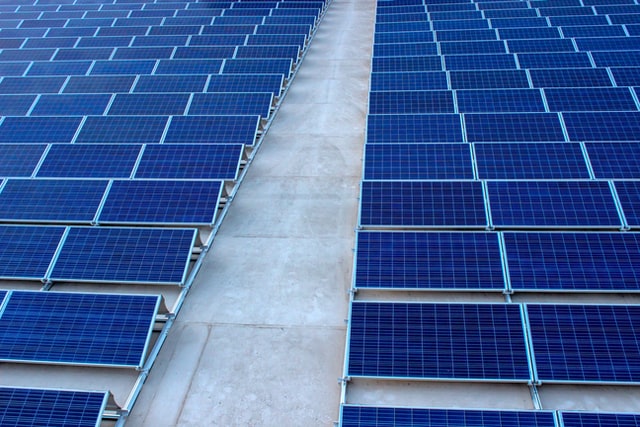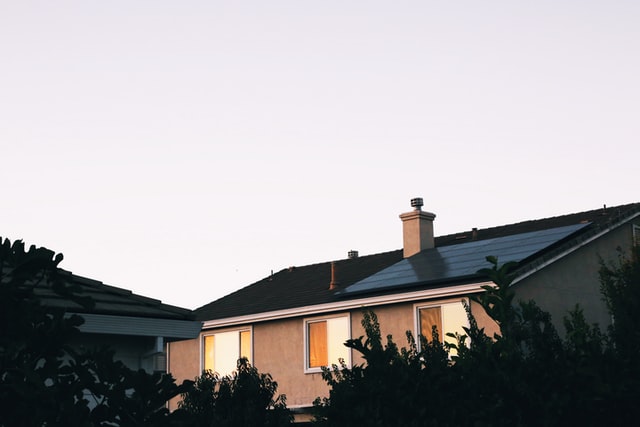Table of Contents
ToggleAs the summers get hotter and the weather gets more humid in various parts of the world, the air conditioning unit has become an increasingly essential item for homes. However, running one or a few units can be costly. About 12% of an average home’s energy consumption in the United States is due to air conditioning.
The use of this electrical item not only puts a burden on the pocket, it is also burdensome on the environment. About 117 million metric tons of carbon dioxide is released, thanks to air conditioning. Using solar air conditioners will reduce your carbon footprint as well as help you save on utilities.
In the past, solar air conditioning and mini-splits were unpopular and not easily available. This has changed. Major advancements in the Heating Ventilation and Air Conditioning (HVAC) world and photovoltaic technology has given rise to more varieties of solar air conditioners with more effective performance.
In this article, we discuss in greater detail the many types of solar air conditioners and answer a few pertinent questions.
What is a solar air conditioner?
Air conditioners typically run on AC electricity supplied by the energy grid. However, solar air conditioners are designed to get their source of energy directly from photovoltaic panels instead.
This means solar powered air conditioners can run on DC power directly instead of AC. Running directly on DC power generated by solar panels cuts the power loss associated with AC to DC or DC to AC conversion.
Solar air conditioners have been in the market for quite a while now but their adoption has been slow. The reason being, initial prototypes relied purely on solar power which tends to be inconsistent. This did not go well with single-speed compressors which are part of heat pump cooling systems.
However, newer compressor models now operate with fans that are more nimble and have variable speeds. This improved compressor for solar air conditioners works better with direct power (in the form of DC) generated by solar panels.
Over time, better solar-friendly air conditioners were created. Some types can even work in tandem with power from the electricity grid and solar batteries; thus solving the high power needs of an air conditioner and non-daylight hours.


- Photo by Angie Warren on Unsplash
How do solar air conditioners work?
Solar air conditioners are designed to be tied to a solar power system. As such, they can run on DC electricity instantly.
A solar power system contains solar panels, which collect sunlight in photovoltaic (PV) cells then turn the sun’s energy into DC power. This system is wired to the air conditioner so that any DC produced is used to power the unit.
For solar air conditioners which require the use of AC power, they will contain a device called a solar inverter. The inverter converts DC to AC and vice versa when needed.
Types of solar air conditioning
Air can be cooled or heated in more than one way using an air conditioner. Solar air conditioners can be divided into two broad categories by the working mechanism, i.e. using photovoltaic panels or solar thermal heating.
1. Solar thermal air conditioners
These use solar collectors to heat a liquid, such as water, which is passed through the air conditioning system. The evaporation and condensation of the liquid in the system then produces cool air. Most of the models out there are grid tied.
2. Solar photovoltaic (PV) air conditioners
These work the same as traditional split air conditioning systems. They are powered with the assistance of energy from PV panels.
The number of solar panels needed varies depending on the output of each panel, size of the system and power needs of the air conditioner.
Within this category, there are types powered by AC only, DC only, or both (hybrid).
a. DC powered solar air conditioners
Also called conventional solar powered air conditioners, they are purely designed to run on DC electricity generated by solar panels. DC powered solar air conditioners can be wired directly to solar panels without the need for a solar inverter.
As such, it has the simplest setup. This makes it easier for DIY installation and systems maintenance. However, they don’t work without sunlight or at night.
Solar batteries and a solar charge controller need to be added to store excess solar power as well as to power the air conditioner during non-daylight hours. These additional components will bump up the price of the solar system.
b. AC powered solar air conditioners
As the name suggests, this type is built to run on AC only. It is often connected to the grid. Any power generated by a solar power system must be converted from DC to AC first. That is why this type is also referred to as inverter air conditioners, as a solar inverter is required for it to function.
Batteries can be added to store excess solar power for later use. Alternatively, it can be sent back into the grid if a suitable meter is connected to the solar system. Generally, AC powered solar air conditioners cost lower than DC powered solar air conditioners.
c. Hybrid solar powered air conditioners
This type of unit is designed to run on both AC and DC power. It is quite popular now as it can take electricity from the grid as and when needed, or not at all.
In fact, some of the latest models don’t even need the addition of batteries, inverters, charge controllers or net metering. For example, the ACDC12C, which functions like a plug and play device. Just plug the solar panels into the air conditioning unit. This makes the hybrid the easiest to install among all the types.
DC power flows directly into the outdoor unit of a hybrid. At the same time, the unit is linked to the grid via a power point in the house. This negates a need for a contract with the utility provider as this system does not back feed power to the grid.
The grid ‘connection’ can be added to automatically allow operation at night and during poor daylight situations. A hybrid solar air conditioner can pull energy back forth the solar system and grid automatically. It can also supplement any shortage of power from the solar source with that of the grid.
Solar air conditioner for homes
Most of the options available are for homes anyway, as solar air conditioning is yet to be economical for most commercial use. As mentioned earlier, you can opt for one of those types of solar air conditioners for homes. These are grid connected, off grid or have hybrid functionality.
Any of them can be used for permanent and stationary homes, but an off grid arrangement is logically the most suitable option for mobile homes. Solar powered RV air conditioners are great for van life, RVs, trailers, caravans and campervans.
Solar powered RV air conditioners
On some days and in certain situations, it is just impossible to live in a van or RV without an air conditioner. A solar powered RV air conditioner doesn’t come cheap though. The initial investment and maintenance costs can be a little steep.
Furthermore, a large enough battery bank is needed to last a whole day in hot weather. One way to reduce electricity consumption is to ensure the vehicle is well insulated and cool air cannot escape through any cracks. Another way is to provide enough space under the solar panels and the roof of the vehicle to prevent the transference of heat from the panels to the roof.
Some models have a built-in charge controller with slots for optional external batteries and hook-ups to your solar inverter. Some come with dampening brackets to reduce the noise level of the RV air conditioner.
Portable solar powered air conditioners


- (Photo courtesy of Coolala)
In 2017, the first portable solar powered air conditioner was launched. The product was called Coolala. It weighs only 7 pounds, holds up to 8 hours of charge and can be pulled around like a suitcase.
The unit can be plugged into a portable solar charger for outdoor use or into an outlet for indoor use. The built-in battery also functions as a power station for charging small devices.
Smaller products can be found for camping purposes now in many countries. Some even come with built-in mini solar panels. These are small enough to be fitted in a car window for additional cooling.
How much does solar air conditioning cost?
It costs substantially more than a conventional air conditioning unit, coming in at about $2,000 before installation costs. This price may vary from country to country, and depends on the brand, model and capacity of the unit.
Nonetheless, here is a general breakdown of the cost for a stationary home:
- Solar air conditioner: $1,000 – $2,700
- Photovoltaic panels: $250 – $350 each (two or three needed to run the air conditioner unit)
- Wiring: $50 – $200 based on panel location (roof or ground, distance from the house)
- Solar inverter/batteries/charge controller: $1,800 – $3,500 based on the needs of your system
- Professional installation: $1,500 – $3,500
If your solar air conditioner is grid connected, you could qualify for a tax credit from the local utility company or green energy incentives from the government. This helps to bring the cost of the installation down.
When is a solar air conditioner a good choice?
Here are some scenarios when installing one that might work for you:
- You have limited roof space.
Instead of installing a full residential solar panel system, a solar air conditioner is one way to take advantage of renewable energy, decrease your power consumption, and save on your utility bill.
- You live off grid.
Most off-grid homes tend to be smaller than conventional ones, so less energy is needed for heating or cooling.
- You live in a mobile home.
A tiny space will need less cooling or heating power, which makes solar air conditioners more practical.
- Heating or cooling takes up a chunk of your utility bill.
In parts of North America, India, Australia and Europe, the summers can be ridiculously hot and the winters simply freezing. Heating and cooling bills can make up a large percentage of utility cost. Having solar air conditioners that can heat and cool will reduce reliance on the grid.
Conclusion


- Photo by Vivint Solar on Unsplash
There are two mechanisms of cooling or heating in solar air conditioners – through a photovoltaic system or solar collectors. Solar air conditioners work just like split air conditioning units. The main difference is that the former can be powered by solar energy and are designed to work seamlessly with a solar power system.
Presently, there are products available for stationary and mobile homes, as well as light portable units for outdoor use. As photovoltaic technology evolves and global warming progresses, solar powered air conditioners will gain popularity.





